The iPhone 6 Plus Mini-Review: Apple's First Phablet
by Joshua Ho on September 30, 2014 8:00 AM EST- Posted in
- Smartphones
- Apple
- Mobile
- iOS
- iPhone 6 Plus
Software
For the most part, the iOS 8 experience on the iPhone 6 Plus is functionally identical to what you get on the iPhone 6. However, some aspects of the iPad software are also present. For example, it’s possible to rotate the home screen in any direction desired, so it’s fully possible to navigate between home screens with the phone upside down. While not quite like the iPad, there are split views in certain applications and I’m sure that this view will become common as applications are optimized for the iPhone 6 Plus. For the most part, this really helps with taking advantage of the larger screen real estate. This difference also helps make the iPhone 6 Plus feel like the combination of a tablet and phone that it should be. While Reachability is a great feature to have in a pinch, it's really not a replacement for a proper phone if one is looking for easy one-handed use most of the time.
The one issue that I found was that the stock keyboard was ergonomically difficult to use when in landscape, as seen below. While it may be simpler for first time users, I suspect much less frustration would result if all of the extra functions were moved to the center of the keyboard and a split layout was used for the main keys, similar to the iPad.
However, outside of these dedicated applications the iPhone 6 Plus is really does provide a better experience. All of the advantages that come with a tablet such as improved video, photo, and web experiences along with easier content sharing are present in the larger 6 Plus as it sits right around the point where these benefits are clearly tangible. This becomes a major selling point of the device. While the software differences are definitely smaller than what we see on the Galaxy Note line, Apple has managed to do enough that most won't notice a significant difference one way or another.
Final Words
I started this review by listing the differences that the iPhone 6 Plus has when compared to the iPhone 6, and those are really the key points so it's worth going over again. I'm starting to sound like a broken record on this, but for the areas shared with the iPhone 6 it's critical to go back to the iPhone 6 review to understand things like the A8 SoC, performance, and display.
The first key point is the display size. This is fundamentally the most important difference between the iPhone 6 Plus and iPhone 6. While there are other differences, none of them matter when compared to size. I personally found the iPhone 6 to be right around the ideal balance between screen size and one-handed usability. If you're looking for that combination, then the iPhone 6 is really the better choice, even if it doesn't get everything that the iPhone 6 Plus has. However, those that don't care about using their phone with one hand on a regular basis may find the iPhone 6 Plus starts to be a much more appealing choice.
There are really a few key advantages of the iPhone 6 Plus over the iPhone 6 once the size issue is settled. The first is the camera. While rarely active, optical image stabilization has made it possible to achieve far better photos in almost any situation where longer shutter speeds can be used. Apple has really made it painless to take long exposures, as even a quarter of a second doesn't incur significant motion blur due to the multiple exposures combined for each photo. Even though this seems to be the only application of OIS, Apple has managed to make the overall camera experience better in a way that no other OEM has.
The next advantage is battery life. While the iPhone 6 has competitive battery life, the iPhone 6 Plus manages to extend Apple's lead while also maintaining the same thin and light profile that we see on the iPhone 6. The difference in battery life can be quite significant, especially in compute-bound cases where battery life scales mostly linearly with battery size.
The final advantage is resolution. While the iPhone 6 Plus does have a bigger display and all the advantages that come with the bigger screen, Apple has also provided an even higher pixel density than before with the iPhone 6 Plus. It's certainly not as incredibly high as what we see in phones like the LG G3, but the improved pixel density is clearly visible. There are performance trade-offs in GPU-based benchmarks, but otherwise Apple has managed to make this bump in resolution compromise-free. I definitely notice the improved resolution, but this is a mostly subjective area that requires personal experience to judge whether the higher resolution has value.
Overall, the iPhone 6 Plus is a great phone that builds on the foundation of the iPhone 6. Whether it's right for you will be based primarily on whether you want the larger display or not. Once again, it's pretty easy to see the strength of Apple's integrated hardware and software approach as it's only a matter of time before most applications take advantage of the iPhone 6 Plus' additional screen size. However, comparisons between the iPhone 6 and 6 Plus are mostly pointless as they fall into distinctly different categories with different target audiences. There's also relatively little value to testing the iPhone 6 Plus against the Note 3 as this would give the iPhone 6 Plus a massive lead due to differences in time of launch. The iPhone 6 Plus must be compared to the Galaxy Note 4, which looms large on the horizon as Samsung has consistently succeeded in holding on to their first-mover advantage in the phablet market. If you have to buy a phablet now though, the iPhone 6 Plus is the best one available.


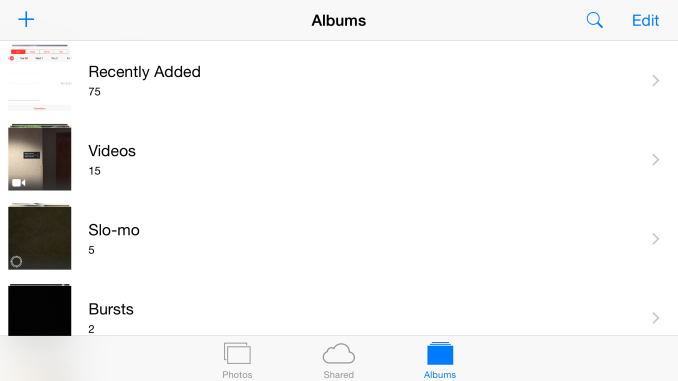

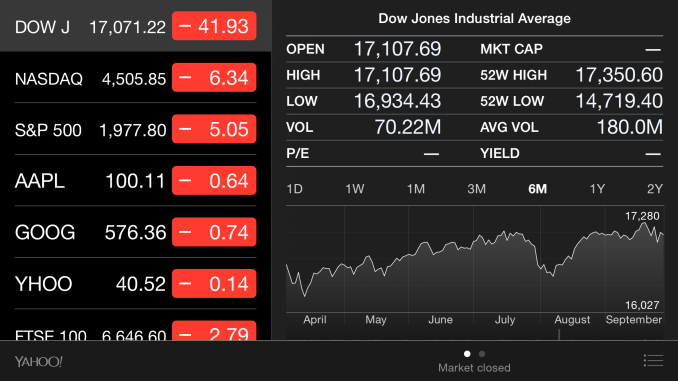
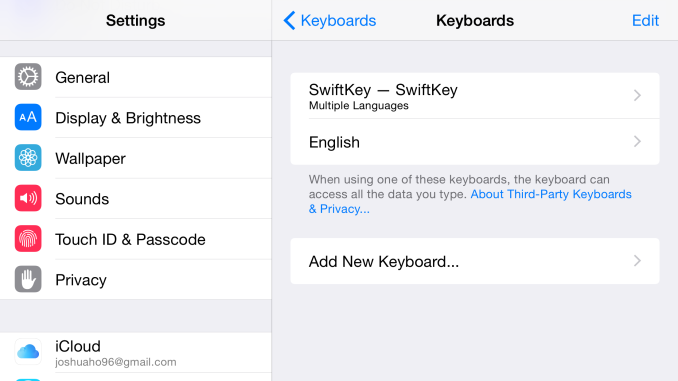
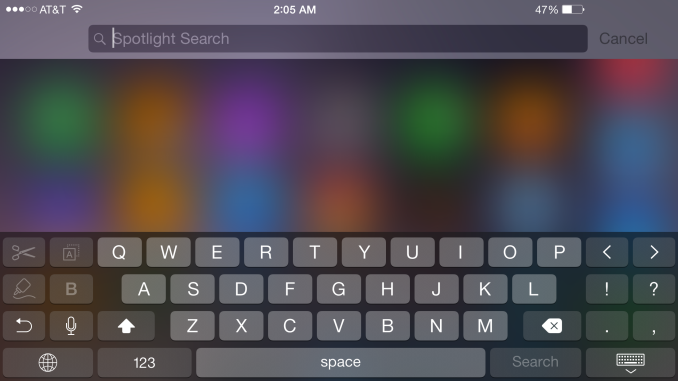

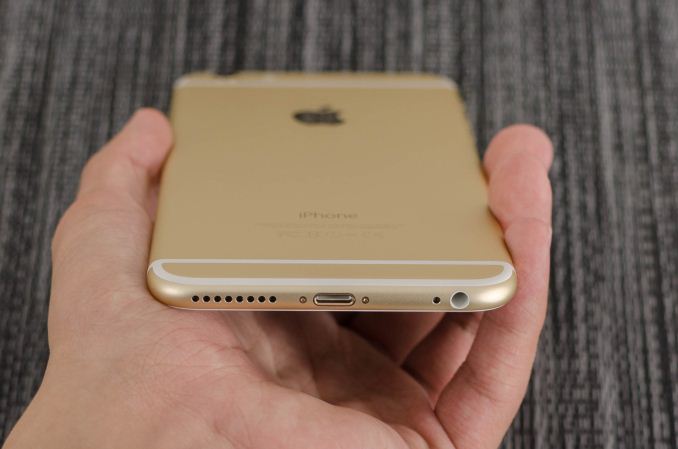
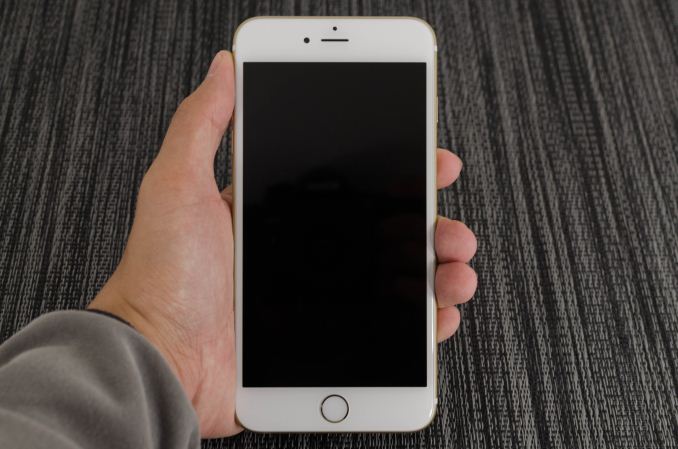








191 Comments
View All Comments
MacrosTheBlack - Tuesday, September 30, 2014 - link
Yet apple's A series "dual core" processors typically outperform the latest quad core flavor of the week and do it at a lower clock rate. Derp. Go back to your cave now.Alexey291 - Tuesday, September 30, 2014 - link
yeeeeeeeah usually in a single over-optimised benchmark aka sunspider :DAaaaaand nothing much else.
bigstrudel - Wednesday, October 1, 2014 - link
And Octane, Browsermark, Kraken, Peacekeeper, WebXPRT...and Sunspider. And that's just the web benchmarks.nerd1 - Wednesday, October 1, 2014 - link
Browser performance is single threaded testing and obviously favors higher-clocked low-core APs (or apple devices). Also don't forget that anandtech is always using chrome browser for testing android browser performace, which is almost twice slower than samsung's stock browsers - and they are using highly optimized Safari for testing apples. Totally not fair.akdj - Thursday, October 2, 2014 - link
Samsung's 'stock' browser? FAST? You've GOT to be kidding me. I've got the Note 3 and at least a dozen browsers. Samsung's is by FAR & AWAY the slowest turtle of them all. Why continue spewing? Did you not read any of the article? The review on the '6'? This A8 is top of the heap. Browsers. Computationally. Graphically. While not always number one, it's in the top two or three in every bench performed including GB3/Kraken/Octane. Not to mention the display accuracy, battery efficiency and ...well, yeah. Totally. Fair.beaker7 - Tuesday, September 30, 2014 - link
Feel better?melgross - Tuesday, September 30, 2014 - link
Wasting our time again, I see.bitNine - Tuesday, September 30, 2014 - link
Have you ever watched someone do a really terrible job at something, then turned around and learned from those mistakes and built something better? That's what Apple is doing. It's actually quite genius. They watch Samsung, HTC and LG fail in certain areas as they pump out the next pointless device which a few thousand people will buy, just to struggle to compete. Meanwhile, using an OS which is fragmented to its core, and reminiscent of Windows Mobile <=6.5. Google makes it, HTC modifies it and ruins it (just like they always did with windows mobile), and unfortunately community roms aren't much better because they lack QA. Buggy, susceptible to malware, but wide open and capable of doing more.As for copying and saying Apple has no innovation, what's with Samsung suddenly copying the fingerprint reader in the home button? What about the fact that Apple is first to have 64bit architecture? All the rest are eons behind, and STILL haven't released any devices with 64bit. It's no longer 2005. They all copy each other in order to compete, and that's what makes ALL DEVICES better. The sooner you get that through your head, and past those ugly blinders you're wearing, the better.
When you directly compare Samsung flagship phones to Apple phones, they constantly one-up each other. You'd know that if you actually paid attention to the raw tests done here at Anandtech. The S5 beat the iPhone 5S and the iPhone 6 destroys the S5 (except in physics category). It's a leap-frog game, and one you clearly can't see because of those aforementioned blinders.
Over-expensive? All other device types aside, when you compare prices with Samsung, LG and HTC, Apple is quite competitive. Not quite so in the tablet market, but phones are competitive. They are all $199 with a contract, and most of them start in the $650 range for full price.
Why is it you believe everyone needs more than 16GB. There are plenty of people out there who wouldn't care about more space. Apple caters to those people and provides a $100 cheaper phone for that reason. They know the market, and you obviously don't.
As for pixel density, who gives a crap which has a higher pixel density considering that 100% of people can't see the individual pixels anyway. I've got 20/15 vision and have never had a complaint about any retina screen being too low resolution. That's just a specs game that iHaters are quick to exploit, and it's something that makes it clear that you don't actually know what you're talking about when it really comes down to it. The only thing you actually got right about the screen is the superiority of OLED over standard LCD (even IPS). Any idea what a larger, and unnecessary, resolution does for the phone? It uses more power, which equals less battery life. Especially when you're talking about a backlit screen. There is simply no need to have a higher resolution screen when it's unnecessary. Pushing for a higher resolution and convincing consumers that it's so necessary, is just as stupid as attaching a marketing term like retina display. They are the same thing, but your brlinders don't allow you to see it. I mean, "Super AMOLED" is a Samsung marketing term. There's not even a reason to have the AM because OLED is, by default, Active Matrix. Yet for some reason, you don't realize this because of your blinders. Don't forget that OLED screens tent to deteriorate faster than an LCD, meaning that iPhone displays will outlast Samsung's. And nevermind that Samsung makes over 90% of OLED phone displays in existence today, and they can barely keep up with their own demand for screens. Adding another several million displays doesn't help that matter. The supply and manufacturing chain must be developed first.
Now, let's take a look at the differences between Samsung's flashy new phone, the Galaxy Note 4. OMG, a fingerprint reader! That's it, aside from a processor upgrade. There's nothing else to the phone aside from the basic updates. It's like the update from the iPhone 5 to the 5S. But you'd never in a million years admit that it's EXACTLY THE SAME THING APPLE DOES, because of, again, the blinders.
I am not dissing Android or Android phones, because Android is an awesome OS with its own faults just like iOS and WP. They are all the same. There is nothing special about what Samsung, HTC and LG do. Just like there's really nothing special about what Apple does. Unfortunately, you're so one-sided that your blinders don't allow you to see that they are all the same, and that the competion between them is exactly what we need and want. Apple gives you better Android phones, and Android phones give iPhone users better iPhones. They are all innovative, and they all have awesome ideas that are better than the other side of the fence.
As I always say, anyone who says one platform is clearly better than the other (other than saying it's better specifically, and only, for themselves), doesn't know wtf they're talking about. You're one of "those people".
nerd1 - Wednesday, October 1, 2014 - link
What a load of BS. Apple is milking customers by not providing memory expansion option (64GB microSD now costs as little as $30, and it will be even cheaper!), and NEVER ever lowers the prices of their device for a whole year. All other OEMs offer cheaper devices from the start, even cheaper with memory expansion, and that gets even more cheaper as time goes by.And apple has the worst hardware - iPhone 6 has worse display than $300 phones, and 1GB of ram is just downright laughable in 2014. Oh there IS passive matrix OLED by the way.
Compare two keynotes from samsung and apple. Sammy showed WQHD OLED, new pen with 2048 levels of sensitivity and tilt sensing, new larger and higher resolution front and back cameras, curved screen, and finally portable VR device presented by god damn John Carmack himself.
Was that ANYTHING new with the apple keynote? Absolutely nothing. And their iPhone 6 plus offers basically nothing new over standard phone (sammy has active pen and multi-screen multitasking for example)
akdj - Thursday, October 2, 2014 - link
You'd do yourself a favor reading bitNine's response to you. Or learning before speaking. Apple released a new CODE! (Swift), a low level code and OpenGL ES overhead elimator (Metal), integrated iOS and OS X with Handoff and Continuity and contrary to your ridiculous OLED fantasies and ignorance about iphone 6's display (or the actual review itself, did you read it?), it's the Best in the Business Bud!I love my Note. Love my iPhone. Dig my iPad and enjoy my HP 2in1. Don't be a DBag and preach from one side of the fence. Jump it and open your mind.
You sound ridiculous (or 13).